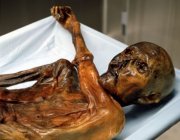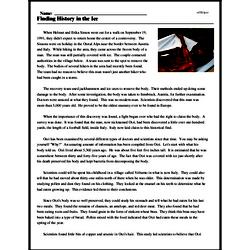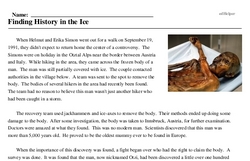Finding History in the Ice
When Helmut and Erika Simon went out for a walk on September 19, 1991, they didn't expect to return home the center of a controversy. The Simons were on holiday in the Otztal Alps near the border between Austria and Italy. While hiking in the area, they came across the frozen body of a man. The man was still partially covered with ice. The couple contacted authorities in the village below. A team was sent to the spot to remove the body. The bodies of several hikers in the area had recently been found. The team had no reason to believe this man wasn't just another hiker who had been caught in a storm.
The recovery team used jackhammers and ice-axes to remove the body. Their methods ended up doing some damage to the body. After some investigation, the body was taken to Innsbruck, Austria, for further examination. Doctors were amazed at what they found. This was no modern man. Scientists discovered that this man was more than 5,000 years old. He proved to be the oldest mummy ever to be found in Europe.
When the importance of this discovery was found, a fight began over who had the right to claim the body. A survey was done. It was found that the man, now nicknamed Otzi, had been discovered a little over one hundred yards, the length of a football field, inside Italy. Italy now laid claim to this historical find.
Otzi has been examined by several different types of doctors and scientists since that time. You may be asking yourself "Why?" An amazing amount of information has been compiled from Otzi. Let's start with what his body told us. Otzi lived about 5,300 years ago. He was about five feet five inches tall. It is estimated that he was somewhere between thirty and forty-five years of age. The fact that Otzi was covered with ice just shortly after his death preserved his body and kept bacteria from decomposing the body.
Scientists could tell he spent his childhood in a village called Velturno in what is now Italy. They could also tell that he had moved about thirty-one miles north of there when he was older. This determination was made by studying pollen and dust they found on his clothing. They looked at the enamel on his teeth to determine what he had eaten growing up. This evidence led them to their conclusions.




